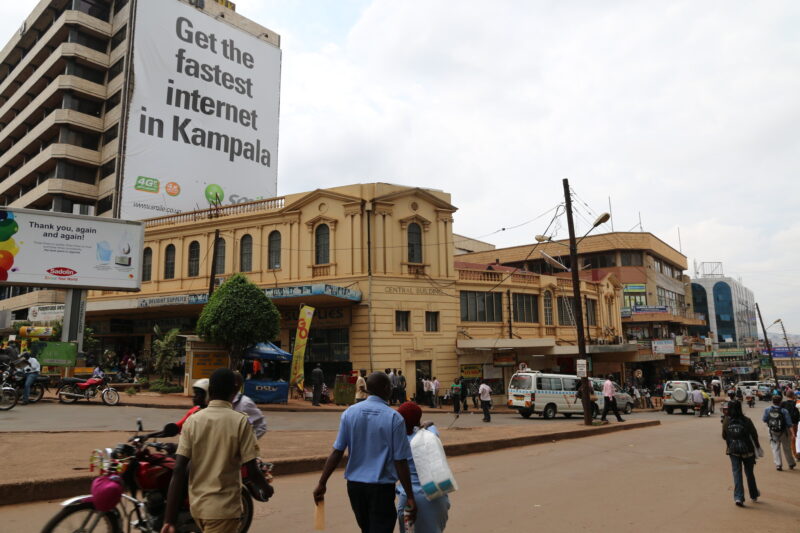David N. Tshimba
Forced displacement, the world over, is increasingly urbanised: urban areas are becoming key sites of asylum for a great many refugees even though humanitarian assistance available in them is still limited, especially for countries hosting huge amount of prima facie refugees such as Uganda. Based on small-scale rapid fieldwork, the present study revisits the widespread policy assumptions that refugees who are self-settled or settling in Uganda’s urban areas are essentially motivated by economic/livelihoods prospects and, as such, are more self-reliant than those in rural-based refugee settlements.
Three objectives guided the study: (1) to inquire into the motivations for refugees’ self- settlement in Uganda’s urban spaces in lieu of designated refugee settlements; (2) to assess whether there is a mismatch between widespread assumptions that refugees self-settled in urban areas are more self-reliant in Uganda than those who remain in rural-based refugee settlements, especially following the outbreak of the COVID-19 pandemic; and (3) to draw lessons from the self-settlement of asylum seekers and refugees in Uganda’s urban spaces for the future of asylum governance and refugee response across both the global South and North. Data collection for this study entailed in-person focus group discussions, in-depth interviews (both in-person and online), and to some limited extent observations.
Chief among the findings of this study is that the rationales for refugees’ self-settlement in urban areas are diverse and contextually specific. These range from previous lifestyles and standards of living in refugees’ countries of origin, some hard-to-bear ecological and social conditions in refugee settlements, the search for livelihood opportunity, self-propelled local integration away from the direct gaze of state and society, the imagined prospect of fast-tracked resettlement, to protection and specific security concerns. Many refugees with whom we interacted (especially those with protracted stays) continually see this settlement-based approach to their protection and livelihood concerns as a constraint rather than an enabler of the much-desired local integration. What is more, the decision to leave the settlement for to take asylum in the fairly cosmopolitan spaces of the country’s urban areas is generally individually determined. At the household level, moreover, the execution of such a decision can be profoundly gendered.
In the second instance, it was found out that if cases and threats of sexual and gender-based violence (SGBV) especially against women and girls in the course of the COVID-19 lockdowns were reported to be rising among Ugandan hosts, house rent insecurity, lack of meals, and lack of access to medical care (more so COVID-19 unrelated) were reported to be the three biggest concerns of self-settled/ling refugees in urban areas during the pandemic times. For many self-settled refugees in Uganda’s urban areas, their level of self-reliance rapidly fell in the wake of the COVID-19 pandemic. A great many self-settled refugees thus became even more dependent on charity compared to their counterparts in rural-based refugee settlements.
The outbreak of COVID-19 and the regimentation of life that followed it profoundly affected the capacities and capabilities of self-settled/ling refugees in Uganda’s urban areas to look after themselves much more markedly than their counterparts in refugee settlements, who were still benefited from support, albeit at a meagre level.
In the final instance, the study reveals that despite its expansive definition of refugee, the Uganda refugee legal and regulatory frameworks offer a fairly generous regime of care for prima facie refugees but there is a relatively limited range of measures in place to protect the rights and provide protection for those granted refugee status by way of individual refugee status determination. Those who, for various reasons and motivations, seek to break away from such ‘containment politics of refugee protection’ by seeking refuge in cosmopolitan urban spaces are often faced with insurmountable challenges to a dignified asylum. One such challenge lies in access to employment opportunities and securing gainful employment. Thus, many self-settled/ling refugees who have professional qualifications or specialised skills end up being employed in informal jobs or informal self-employed activities. Others are simply subject to the whims of both employers and those involved in processing documents (in particular, certificating the equivalence of their qualifications to Ugandan standards), putting them at greater disadvantage than other aliens and the local hosts. Due, in part, to frustration with these issues, some of these refugees may be open to different types of exploitation and abuse in the urban labour market in Uganda.
Against this backdrop of findings, this study concludes that the legislation and regulation that are written on paper should catch up with reality on-the-ground insofar as the country’s comprehensive refugee response is concerned. Since it is in the name of local integration that all of Uganda’s refugee self-reliance strategies and practices are undertaken, one of the chief recommendation the study makes is for the Ugandan state to enable the naturalisation of the relatively small number of Uganda’s forced migrants – perhaps starting with those self-settled refugees in Ugandan cities and towns prior to the enactment of the 2006 Act.
You will need a PDF reader such as Adobe Acrobat (downloadable from Adobe) to view PDF file(s).
